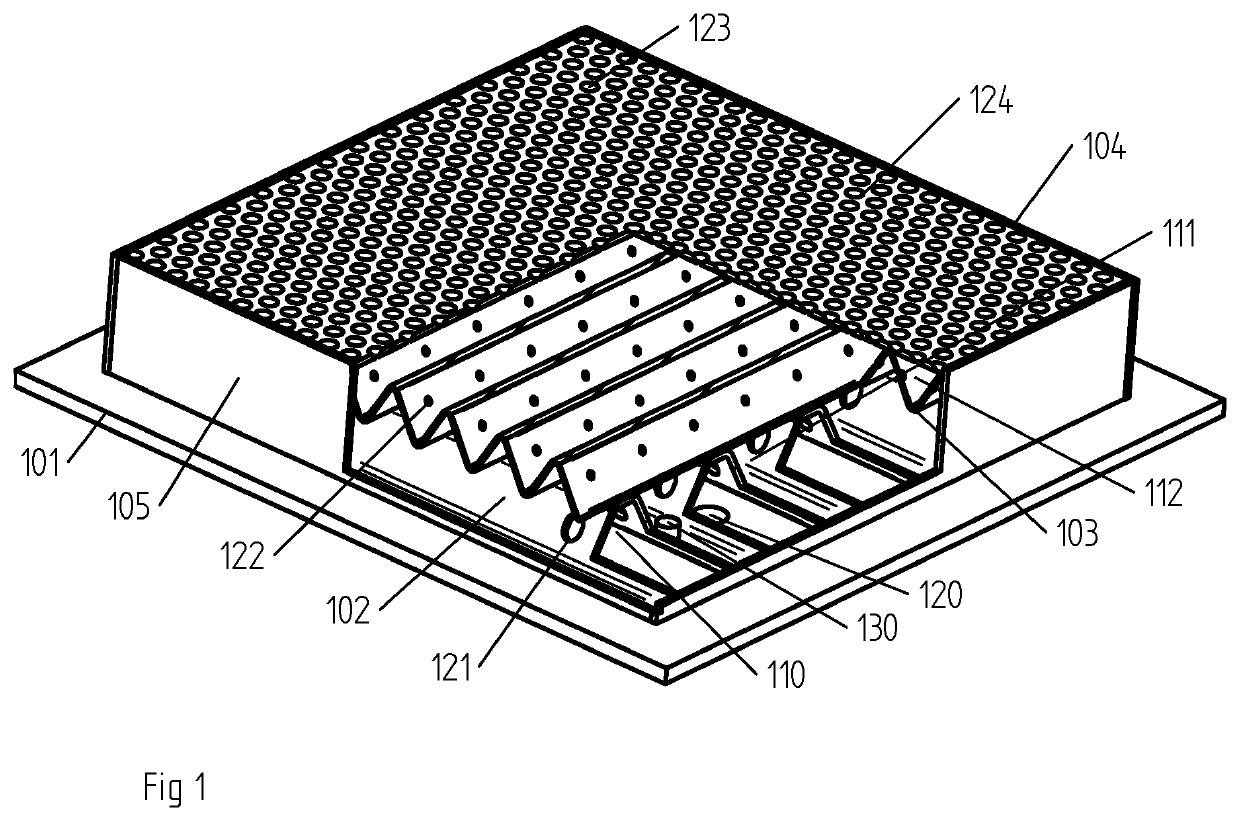Viscous-drag-reducing cladding
- Summary
- Abstract
- Description
- Claims
- Application Information
AI Technical Summary
Benefits of technology
Problems solved by technology
Method used
Image
Examples
Embodiment Construction
[0104]One embodiment of a viscous drag reducing cladding of the present invention is shown in FIG. 1. The top (outer) surface of the cladding comprises top sheet 104 comprising a multitude of closely-packed air pockets 124 where the diameter of the outer surface, which is adjacent to the water in the case of a ship, is larger than the inner diameter which might be adjoining the body of a ship. Pressurised air is supplied to the inside of each air pocket, and operates to keep water out of the pocket, and to eject any water that should enter the pocket. The pressurised air is supplied in this embodiment by an air distribution system comprising formed sheet metal elements 102&103 that are assembled in a way as to create air chambers 110, 111&112. Air flows from one chamber to the next via apertures in the sheets 121&122. This air distribution system provides substantially equal pressure over a large section of hull surface area or the surface area of the object to which the cladding is...
PUM
 Login to View More
Login to View More Abstract
Description
Claims
Application Information
 Login to View More
Login to View More - R&D
- Intellectual Property
- Life Sciences
- Materials
- Tech Scout
- Unparalleled Data Quality
- Higher Quality Content
- 60% Fewer Hallucinations
Browse by: Latest US Patents, China's latest patents, Technical Efficacy Thesaurus, Application Domain, Technology Topic, Popular Technical Reports.
© 2025 PatSnap. All rights reserved.Legal|Privacy policy|Modern Slavery Act Transparency Statement|Sitemap|About US| Contact US: help@patsnap.com



